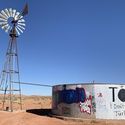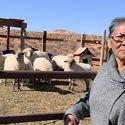Native Americans have the most difficulty accessing clean water, report says
Last updated 4/8/2020 at 2:44pm
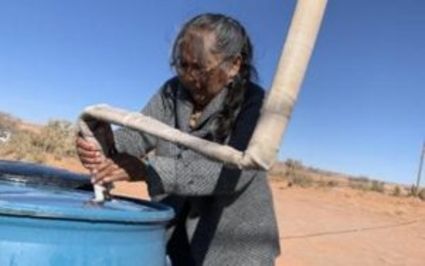
Laurel Morales/KJZZ
Darlene Yazzie, a retired community health worker, says hauling water, firewood and trash-and using an outhouse-are just a few of the things that make life hard on the Navajo reservation.
DENNEHOTSO, Ariz.- The nearest water station for Darlene Yazzie is nine miles away from her home at the Dennehotso Chapter House-or community center-in the Four Corners region of Arizona. On a recent day, she counted her nickels and dimes to buy water. It costs $1.10, plus gas money, to fill up two 50-gallon barrels, and she's just learned the price is going up next month.
Yazzie lugged a T-shaped key as tall as she is out to the well, where she dropped it into the hole and turned a crank to open the valve. Water gushed into the plastic barrel.
This is Yazzie's drinking water. For her animals, she usually drives to a windmill, but on this day the tank was empty and her sheep were thirsty.
"There's no water in the windmill," Yazzie said. "It's dry because the wind is not blowing. The only way they have water is if it's blowing."
Anyway, Yazzie said, the windmill water isn't safe for humans. Officials told her arsenic and uranium levels are too high. Yazzie and many others give the water to their animals, even though they plan to eat them.
"A lot of people died of cancer around here," Yazzie said. "I noticed that more are being diagnosed. I'm pretty sure it's because of the environment and the water."
The groundwater in some areas has been contaminated by the 521 abandoned uranium mines in this part of the sprawling Navajo Nation. And a new report called Closing the Water Access Gap in the United States (at http://www.closethewatergap.org) said gastric cancer rates doubled in the 1990s where uranium mining occurred. Unregulated drinking water sources are the greatest public health risk on the Navajo reservation, according to the federal Environmental Protection Agency.
Across the country, 44 million people are served by water systems that recently had Safe Drinking Water Act violations.
Many of us take for granted turning on the tap or flushing the toilet. But the report, which was released Nov. 18, showed more than 2 million Americans live without these conveniences. And Native Americans are more likely to have trouble accessing water than any other group.
Fifty-eight out of every 1,000 Native American households lack plumbing, compared with three out of every 1,000 white households, according to the report by Dig Deep and the U.S. Water Alliance. This disparity has implications for public health. Native Americans experience more deaths, poverty and higher unemployment rates.

"We knew the problem was much bigger, but when we went out to look at the data it didn't exist," said George McGraw, the founder of Dig Deep, a human rights nonprofit that has helped build water systems on the reservation. "No one could tell us from federal to state agencies to other nonprofits just how many Americans still don't have running water or a working toilet where they live."
So McGraw commissioned experts from around the country to piece together the data they did have, and come up with the water gap report. What he found was that race is the strongest predictor of water and sanitation access.
A century ago, water-born illnesses were a leading cause of death. The U.S. government invested in modern water and sanitation systems and nearly eradicated those diseases, but some communities were passed over.

"Our nations didn't have access to funding for infrastructure in the same way that it's federally allocated for cities and states overall," said Mahrinah von Schlegel, an anthropologist from San Ildefonso Pueblo in New Mexico.
In the Southwest, she said, it's expensive to build pipelines across such remote and sparsely populated tribal lands.
"It's been a struggle, one, to get the access to that infrastructure capital, and then, two, it's really expensive to develop some of these remote areas," von Schlegel said.
It's a familiar refrain on the reservation. In Mexican Water, the next town over from Dennehotso, Richard Nelson has been asking community leaders when his mother is going to get clean running water.
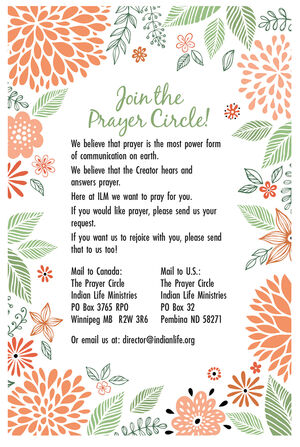
"A chapter official told me, 'Yeah, we're going to have running water,'" Nelson said. "'We're going to start laying the pipe.' It took another two whole years to do the piping system. Then they said, 'We're going to have water in a year,' and that was two years ago."
Federal funding for water infrastructure today is a small percentage of what it once was. The Indian Health Service estimated it would cost $200 million to provide basic water and sanitation access on the Navajo reservation.
This story is part of Elemental: Covering Sustainability, a multimedia collaboration between Cronkite News, Arizona PBS, KJZZ, KPCC, Rocky Mountain PBS and PBS SoCal.
Note: This article is published via a Creative Commons license. Cronkite News is produced
by the Walter Cronkite School
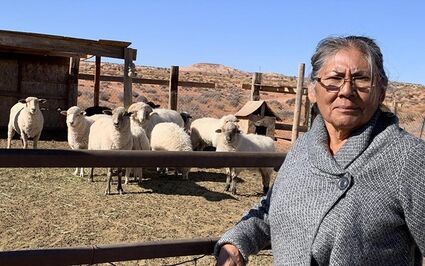
Laurel Morales/KJZZ
Darlene Yazzie typically hauls water for her sheep from a windmill five miles from her home. Officials tell her the water is unsafe for humans but OK for livestock.
of Journalism and Mass Communication at Arizona State University
Cronkite News cronkitenews.azpbs.org



